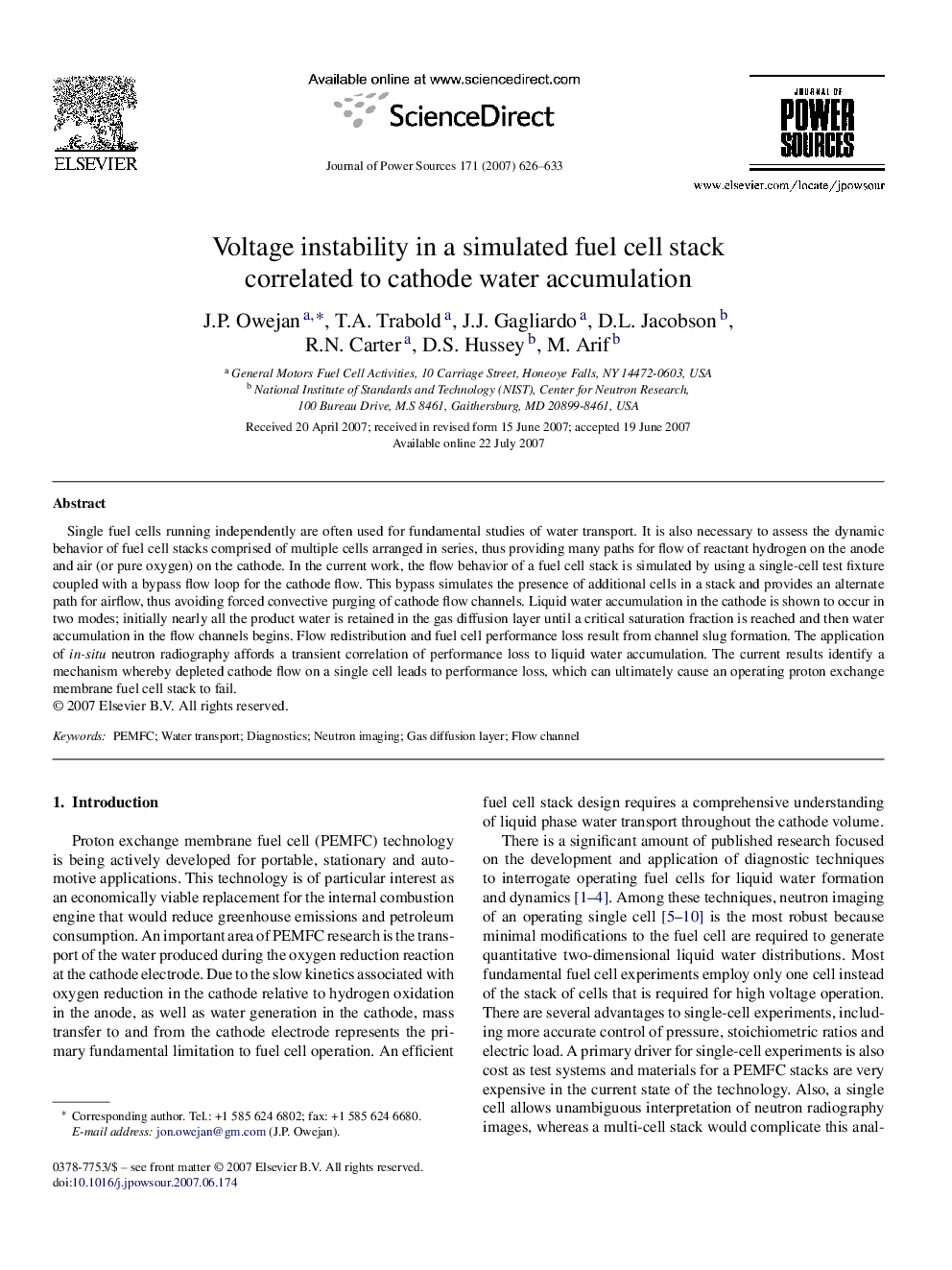| Article ID | Journal | Published Year | Pages | File Type |
|---|---|---|---|---|
| 1286376 | Journal of Power Sources | 2007 | 8 Pages |
Single fuel cells running independently are often used for fundamental studies of water transport. It is also necessary to assess the dynamic behavior of fuel cell stacks comprised of multiple cells arranged in series, thus providing many paths for flow of reactant hydrogen on the anode and air (or pure oxygen) on the cathode. In the current work, the flow behavior of a fuel cell stack is simulated by using a single-cell test fixture coupled with a bypass flow loop for the cathode flow. This bypass simulates the presence of additional cells in a stack and provides an alternate path for airflow, thus avoiding forced convective purging of cathode flow channels. Liquid water accumulation in the cathode is shown to occur in two modes; initially nearly all the product water is retained in the gas diffusion layer until a critical saturation fraction is reached and then water accumulation in the flow channels begins. Flow redistribution and fuel cell performance loss result from channel slug formation. The application of in-situ neutron radiography affords a transient correlation of performance loss to liquid water accumulation. The current results identify a mechanism whereby depleted cathode flow on a single cell leads to performance loss, which can ultimately cause an operating proton exchange membrane fuel cell stack to fail.
